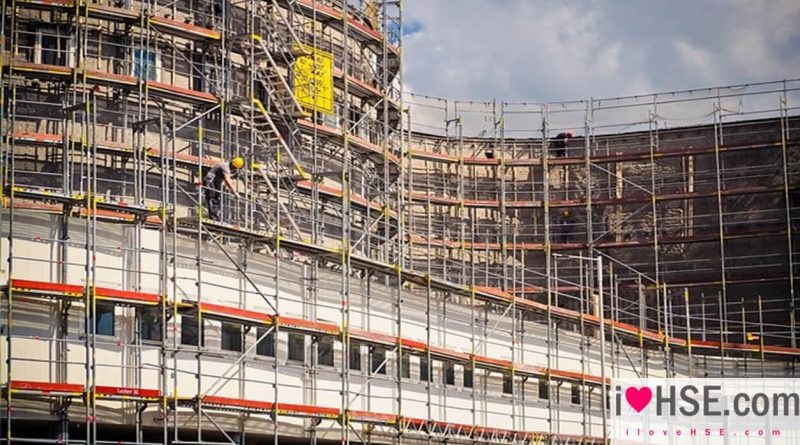10 Ways to Build and Maintain Strong Safety Culture in Your Organization
Ensuring health and safety at construction sites is paramount for workers’ well-being and any project’s success. As a responsible individual, you must establish a safety culture within your organization. You can reduce accidents, protect lives, and enhance productivity by instilling a collective commitment to safety. In this article, we will explore ten powerful strategies to create a safety culture that prioritizes the health and well-being of everyone on the construction site.
List of contents
- 1 Lead by Example
- 2 Effective Communication Channels
- 3 Provision of Comprehensive Training Programs
- 4 Implementing Risk Assessments
- 5 Safety Incentives and Recognition
- 6 Establishing Emergency Response Protocols
- 7 Ensuring Adequate Signage and Safety Barriers
- 8 Having a Holistic Approach to Promoting Health and Well-being
- 9 Environmental Responsibility
- 10 Continuous Improvement and Evaluation
- 11 References/Further Recomended Readings
Lead by Example
A safety-conscious workplace begins with leaders who actively prioritize and demonstrate safe practices. By consistently adhering to safety protocols and wearing personal protective equipment (PPE), such as hard hats, safety glasses, and high-visibility clothing, managers and supervisors inspire workers to follow suit. By leading by example, you cultivate a safety culture that permeates the organization.
Effective Communication Channels
Establishing clear and open lines of communication is crucial for ensuring safety on construction sites. Regular safety meetings, toolbox talks, and safety reminders via bulletin boards or digital platforms can effectively disseminate critical information. By promoting dialogue, workers can voice concerns, suggest improvements, and share best practices, fostering a collaborative safety culture.
Provision of Comprehensive Training Programs
Providing thorough employee safety training is vital to creating a safe work environment. Comprehensive programs should cover proper equipment handling, hazard identification, emergency protocols, and safe work practices. Regular refresher courses and ongoing training keep workers up to date and reinforce the importance of safety.
Implementing Risk Assessments
Regular risk assessments are crucial to identify potential hazards and implement preventive measures. Engage workers in the assessment process, as they possess valuable insights into site-specific risks. Proactively addressing safety concerns can mitigate potential accidents and create a safer working environment.
Safety Incentives and Recognition
Implementing a system of safety incentives and recognition can significantly impact the overall safety culture. Rewarding workers who consistently adhere to safety practices or suggest innovative safety solutions fosters a positive work environment. Acknowledging and appreciating their efforts instills a sense of pride and motivation in the workforce.
Establishing Emergency Response Protocols
Preparedness is Key in this. Developing well-defined emergency response protocols is critical for handling potential crises swiftly and effectively. Conduct regular drills to ensure workers know evacuation routes, assembly points, and emergency contact information. Being prepared can minimize the impact of unforeseen events and safeguard worker well-being.
Ensuring Adequate Signage and Safety Barriers
Signages and safety barriers are visual Cues for Safety. Clearly visible signage and safety barriers prevent accidents and promote a safety culture. Use signage to communicate hazards, indicate restricted areas, and provide safety reminders. Physical barriers, such as guardrails or barricades, prevent unauthorized access to hazardous zones and protect workers from potential risks.
Having a Holistic Approach to Promoting Health and Well-being
Emphasizing worker health and well-being is fundamental to a comprehensive safety culture. Encourage regular breaks, provide access to clean drinking water, and establish shaded rest areas to combat heat-related illnesses. Promote healthy lifestyle habits and educate workers on ergonomics to prevent musculoskeletal disorders.
Environmental Responsibility
Construction site safety extends beyond worker well-being, including environmental responsibility. Implement eco-friendly practices, such as waste management systems and sustainable material usage, to minimize the project’s environmental impact. By prioritizing the health of both workers and the environment, you create a culture of holistic safety.
Continuous Improvement and Evaluation
A safety culture thrives when there is a commitment to continuous improvement. Regularly evaluate safety processes, identify areas for enhancement, and implement necessary changes. Encourage workers to provide feedback and suggestions for improvement, fostering a culture that strives for a safer work environment.
Conclusion
Prioritizing safety on construction sites requires a collective effort from engineers, supervisors, and workers alike. By implementing these ten strategies—leading by example, promoting effective communication, investing in training, assessing risks, providing incentives, establishing emergency protocols, ensuring proper signage, prioritizing health, embracing environmental responsibility, and continuously improving—you can cultivate a safety culture that protects the well-being of all workers while maintaining productivity and project success.
References/Further Recomended Readings
- Promoting a positive culture – https://www.iosh.co.uk/~/media/Documents/Promoting%20a%20positive%20cultureconnect.pdf
- Safety Culture – https://www.hse.gov.uk/humanfactors/topics/common4.pdf
- HSE Human Factors Briefing Note No. 7 – https://www.nost.edu.au/icms_docs/143973_HSE_Human_Factors_07_Safety_Culture.pdf



